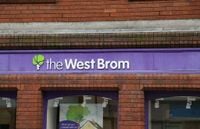UK homeowners may soon find relief from high mortgage rates, as lenders respond to changing economic conditions with significant rate cuts. Recent moves by major banks, alongside expectations of interest rate reductions from the Bank of England (BOE), suggest that the cost of borrowing could soon see a notable decline.
As of April 8, 2025, the average interest rate on a two-year fixed mortgage in the UK stood at 5.32%, while the average for a five-year fix was slightly lower at 5.17%, according to financial data firm Moneyfacts. These rates have remained elevated since late 2022, a period marked by economic instability largely attributed to former Prime Minister Liz Truss's controversial mini-budget.
Despite these figures, some lenders have begun to reduce their rates. TSB Bank and MPowered Mortgages have already cut costs on specific fixed-rate deals. Notably, Coventry Building Society has introduced a two-year fixed mortgage option at 3.89% for borrowers with 35% equity, though this comes with a £999 ($1,303) fee.
The recent fluctuations in mortgage pricing are influenced by broader economic trends, particularly those stemming from the United States. U.S. President Donald Trump's announcement of tariffs on imports from over 60 countries has raised concerns about a potential global economic slowdown. This has led economists to anticipate that the BOE will need to adopt a more aggressive stance to support the UK economy. Market predictions have shifted significantly: earlier forecasts suggested two rate cuts in 2025, but by mid-April, expectations had risen to four reductions within the next year, as reported by the BBC.
Sarah Coles, head of personal finance at Hargreaves Lansdown, emphasized the urgency of the situation, stating that central banks are "really looking to cut interest rates as much as possible in order to support growth." As lenders react to these anticipated changes, mortgage brokers indicate that some fixed-rate deals could fall to as low as 3.79% in the near future, marking a dramatic decrease from the peaks of 6.85% recorded in August 2023.
In a parallel development, West Brom Building Society announced on April 15, 2025, that it would cut rates on its two-year fixed mortgage products by up to 0.31%. Their 80% loan-to-value (LTV) remortgage option now stands at 4.39%, down from previous levels, while the purchase product has dropped to 4.29%.
Gareth Madeley, head of product at West Brom, expressed satisfaction with the new rates, stating, "We’re really pleased to be making further reductions across our 2-year fixed-rate range. We keep a close eye on the market and work hard to keep our products as competitive as possible." He added that these changes aim to provide more options for buyers and those looking to remortgage.
Across the Atlantic, the U.S. mortgage market has also seen fluctuations. On April 14, 2025, the average rate on 30-year mortgages dipped to 7.07%, following a brief surge earlier in the month. This decline came after rates had reached 7.14% on April 11, marking the highest levels seen since May 29, 2024. Meanwhile, the average rate on 15-year mortgages fell to 6.19% from 6.31% during the same period.
These changes are particularly significant given the historical context. Last September, 30-year mortgage rates hit a two-year low of 5.89%, while in late 2023, they soared to a 23-year peak of 8.01%. The current fluctuations reflect ongoing economic adjustments following aggressive rate hikes by the Federal Reserve aimed at curbing inflation.
In the UK, lenders are engaging in a price war to attract borrowers. HSBC and the Co-operative Bank have announced fresh rate cuts, with HSBC set to implement reductions across various products effective April 16, 2025. The Co-operative Bank will relaunch its mainstream and buy-to-let mortgage ranges on April 17, 2025, reducing rates on new two- and three-year fixed deals for homebuyers by as much as 0.26 percentage points.
Additionally, Halifax and Lloyds Bank have relaxed their affordability rules, allowing homebuyers to borrow more. The Financial Conduct Authority recently noted that some lenders' stress tests may have been overly restrictive, limiting access to affordable mortgages. As a result, the Lloyds group brands have lowered their stress test rates, potentially increasing the maximum loan available to typical customers by about 13%.
For example, a couple with a total household income of £75,000 may see their borrowing capacity increase from £286,000 to £324,000 due to these changes. Furthermore, the number of low-deposit mortgages allowing buyers to borrow up to 95% of a property's value has reached a 17-year high, providing crucial support for first-time buyers.
Overall, the evolving landscape of mortgage rates in the UK and the U.S. reflects a complex interplay of economic factors, lender strategies, and consumer needs. Homebuyers and those looking to remortgage are advised to stay informed and explore their options as the market continues to shift.
As the situation develops, it will be essential for borrowers to remain vigilant and proactive in seeking the best possible mortgage deals, especially amid the anticipated changes in interest rates and lender policies.









